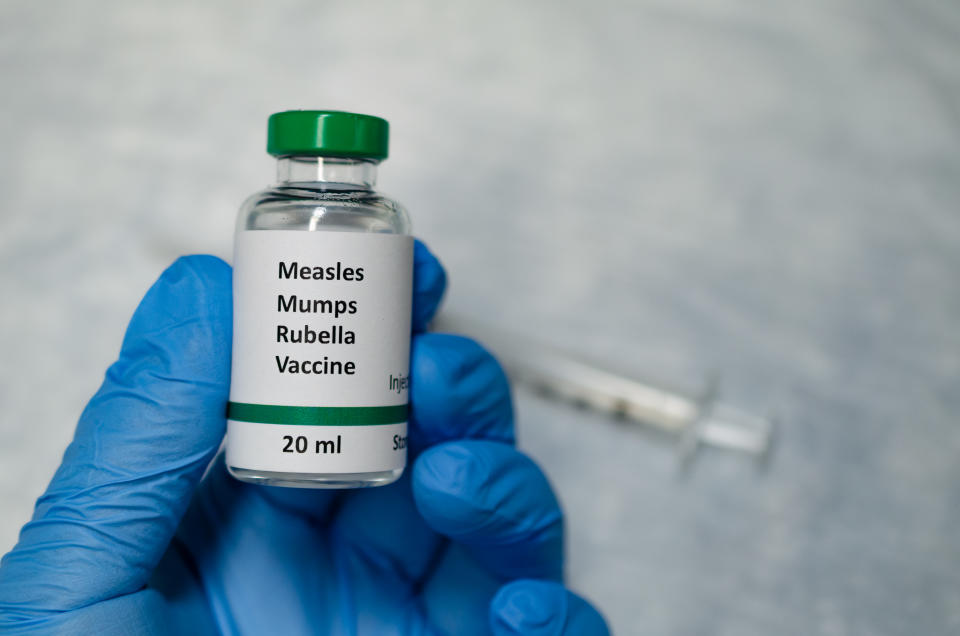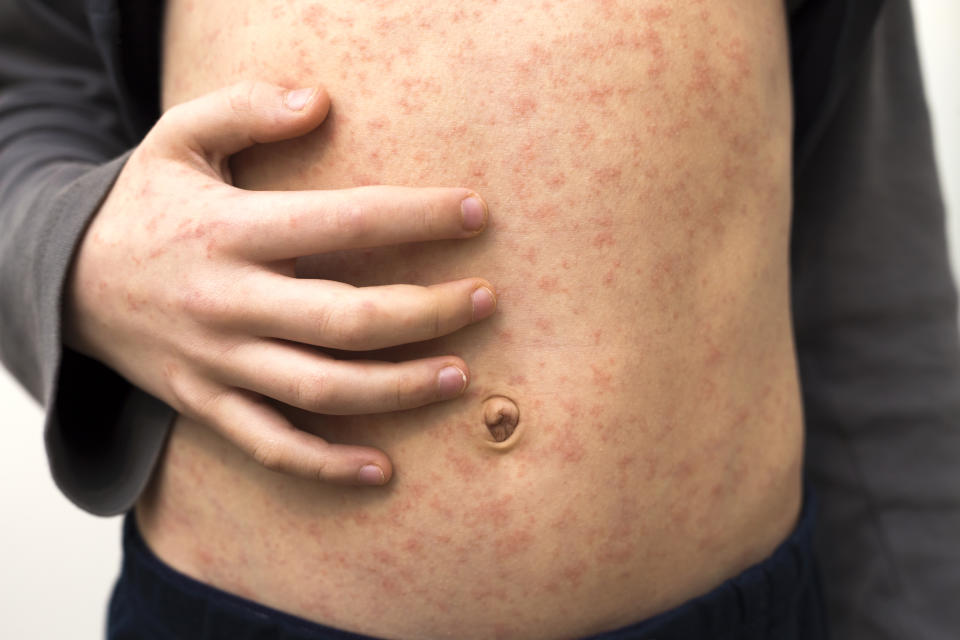England falls short of herd immunity as MMR vaccine uptake misses WHO target

The number of young children in England being vaccinated against measles, mumps and rubella (MMR) continues to fall short of the World Health Organization’s (WHO) target.
NHS Digital data has revealed just 90.6% of youngsters aged two had received the first dose of the jab in 2019/20.
Coverage peaked at 92.7% in 2013/14, before declining over the next six years.
Although the number of immunised youngsters has risen from 90.3% in 2018/19, it is still less than the WHO’s goal.
Read more: Just 52% of Britons 'strongly agree' vaccines are safe
An immunisation rate of 95% could ward off a measles, mumps or rubella outbreak due to herd immunity. This occurs when a sufficient number of people have been vaccinated to prevent an infection taking hold within a community.
Herd immunity protects those who may be unable to have a jab, like cancer or HIV patients.
The NHS data has been released shortly after scientists from University College London found just under a fifth (22%) of people would be unlikely to get a coronavirus vaccine if one becomes available.

Children in the UK are routinely given the MMR jab.
The first dose is administered when a baby is around one, followed by a booster at three years and four months.
The NHS Digital data shows coverage of the first MMR dose increased in six of the nine English regions in 2019/20.
The North East scored best, with 95.1% of children up to two years old being immunised, the only region to exceed the 95% target.
London had the lowest level of coverage at 83.6%, up from 83% in 2018/19.
Among five-year-olds, 94.5% of children in England in 2019/20 had received the first MMR dose, the same as the year before.
Read more: MMR vaccine is effective and does not cause autism, study confirms
When it comes to the booster, 87.2% of youngsters had been vaccinated by the time they were five, up from 86.4% in 2018/19.
MMR aside, the NHS Digital data shows immunisation rates are generally on the rise among children in England, with more being protected against diphtheria, tetanus and pneumonia, to name a few conditions.
“Vaccination is one of the safest and most effective methods we have to save lives and stop the spread of infectious diseases,” said Dr Doug Brown, from the British Society for Immunology.
“The slight rise in uptake of routine childhood vaccinations in England is a step in the right direction but we must still take urgent action to overcome the ongoing trend of missing the 95% target set out by the World Health Organization.
“Low levels of vaccination coverage matter as it means diseases such as measles have the potential to spread within our communities, infecting unvaccinated people, including vulnerable individuals unable to have vaccinations such as young babies or people with cancer.”
Measles and mumps on the rise
In 2017, the WHO declared the UK had “eliminated measles” based on 2014/16 data.
This was reversed when 989 confirmed cases came to light in England and Wales in 2018.
Mumps has also hit a decade high.
Outbreaks in universities and colleges led to more than 5,550 mumps cases in 2019, around four times as many as in 2018.
Read more: Coronavirus may trigger measles resurgence after vaccinations paused
This is the highest number of cases since 7,662 incidences were reported in England and Wales in 2009.
MMR safety fears have been linked to the now-discredited gastroenterologist Andrew Wakefield, who mistakenly linked the vaccine to autism.
The “data” behind the claim has since been called “bogus”, as well as “fatally flawed both scientifically and ethically”.
Rubella cases remain low, with just three confirmed incidences a year in England and Wales since 2017.
The MMR vaccine is said to be less effective at protecting against mumps than measles or rubella.

What are mumps and measles?
Mumps is a highly contagious viral infection defined by painful swelling in the side of the face under the ears, leading to a “hamster” appearance.
It can also trigger a headache, joint pain and fever.
Most cases pass in a week or two with rest, fluids and painkillers.
Around one in seven patients, however, develop viral meningitis. Other complications include inflammation of the pancreas, testicles or ovaries.
Measles is a highly infectious virus that commonly causes cold-like symptoms, a fever and a blotchy rash.
Most cases pass within 10 days, however, it can trigger life-threatening pneumonia and inflammation of the brain.
Both measles and mumps mainly spread via infected droplets expelled in a cough or sneeze. The viruses can also survive for several hours on surfaces.
Neither infection has a specific treatment or cure. Therapies focus on keeping the person comfortable while their immune system fights off the infection.
Vaccination is the best way to ward off the viruses.

 Yahoo Lifestyle
Yahoo Lifestyle 